Some recipes are keepers from the minute you read them. These rotis? Another way to re-purpose plantains, especially ripe, sweet ones is everything. Thank you for an awesome book, guys.
Not to mention easy to craft. I like the fact that what I’ve always known as Nigerian ingredients can undergo a transformation that retains the essence of the familiar but also accentuates nuances and character elements I may not have seen or experienced before.
These flatbreads make me think of boiled plantain, roasted plantain all at once.
Roti (also known as chapati) is an Indian Subcontinent flat bread, made from stoneground wholemeal flour, traditionally known as atta flour, that originated and is consumed in India, Pakistan, Nepal, Sri Lanka , Maldives and Bangladesh. It is also consumed in parts of South Africa, the southern Caribbean, particularly in Trinidad and Tobago, Guyana, and Suriname, and Fiji. Its defining characteristic is that it is unleavened; Source
The recipe calls for blending boiled ripe plantains with water and making a dough of it.
I’ve made this half a dozen times since Thanksgiving. Here’s what I’ve been doing, a bit different from the
You begin with ripe plantains, boiled till soft.
{The Groundnut cookbook ratios are 1 plantain to 200ml water, 300g plain flour and 1 teaspoon of salt}
Top and tail the plantains then slash along the length so the skin is split but don’t remove. Cook the plantains for 10 minutes and leave for a minute to cool before peeling.
Tip: You can freeze excess mashed plantain in portion sizes till ready to use.
Then you blend with water till smooth.
Tip: you can mash instead. This will add some texture to the bread – note though, some bits may stick to your rolling pin or press but nothing a bit of flour won’t sort out
Combine the blended plantain with flour and a pinch of salt.
And mix till a dough forms. If required, add more flour, kneading till the dough is dry enough to roll out.
Form into golf-sized balls.
Allow rest for a few minutes so the gluten relaxes and the dough is easier to handle, then roll out – aim for 4mm thick rounds.
Heat up a pan – I now use my crepe pan. Place one flatbread at a time and cover with a lid. This creates steam in the pan and helps create air pockets.
Flip the bread after 30 – 40 seconds and cover the pan again. Remove from pan and repeat till all the dough is used up. Sometimes flour collects in the pan and makes it all smoky – wipe with a piece of dry kitchen paper to prevent burning.
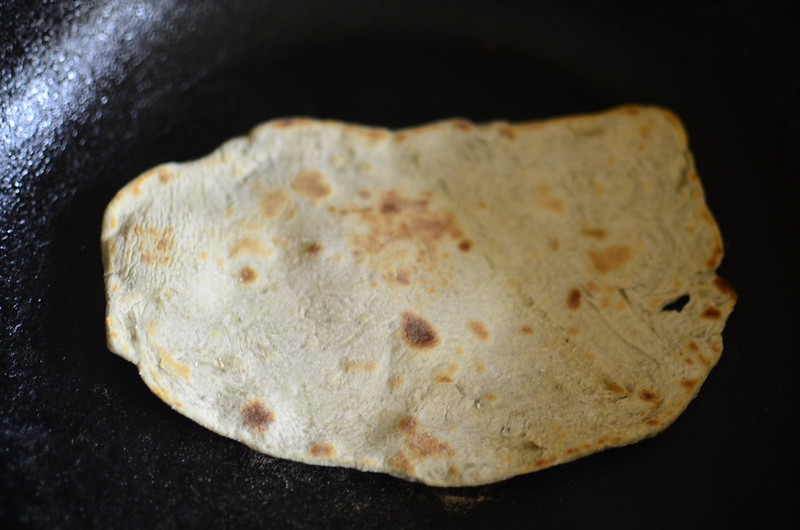
Enjoy. Sometimes I make a wrap…
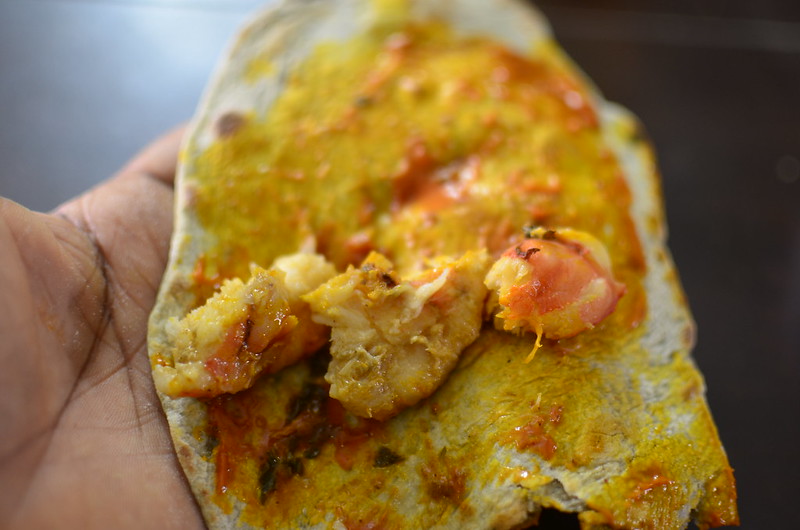
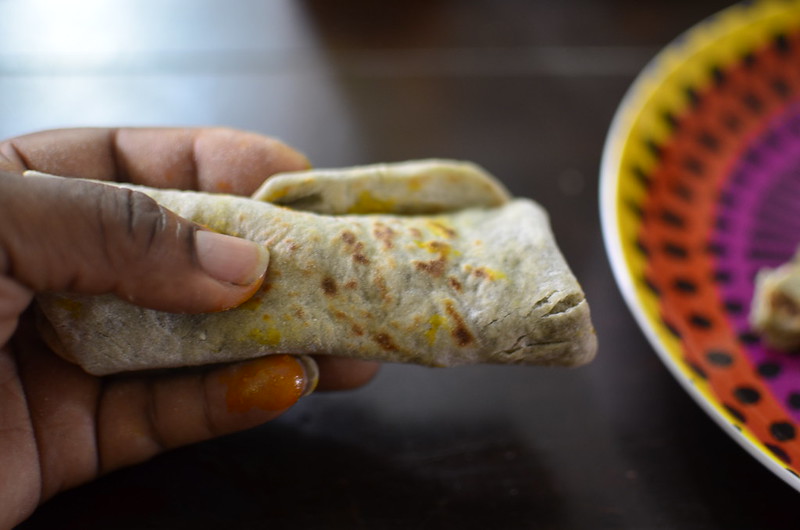
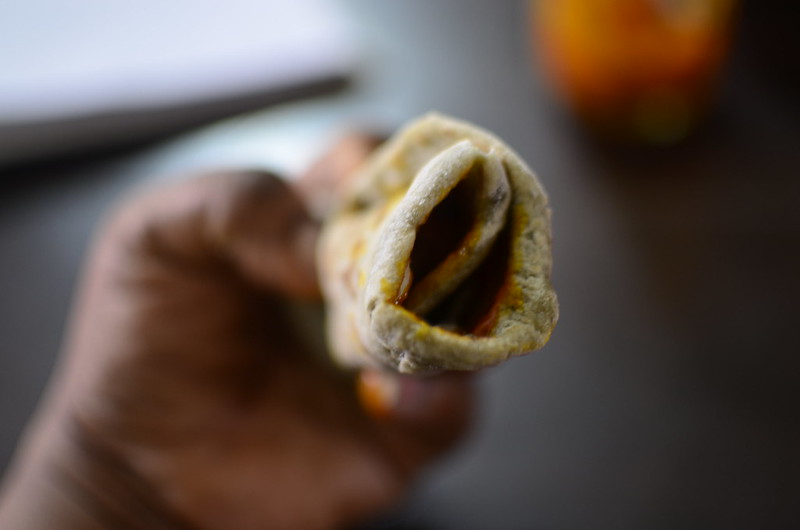
…sometimes, I tear chunks off and dunk in soup or dip in a palm oil sauce – you get the beautiful contrast of sweet and doughy with against spice (in the case of pepper soup).
I love it, absolutely love it. As do a lot of family and friends. In fact, I’m off to make some as we speak, using leftover, frozen mashed plantain.
What do you think? How would you eat it? Pray tell.

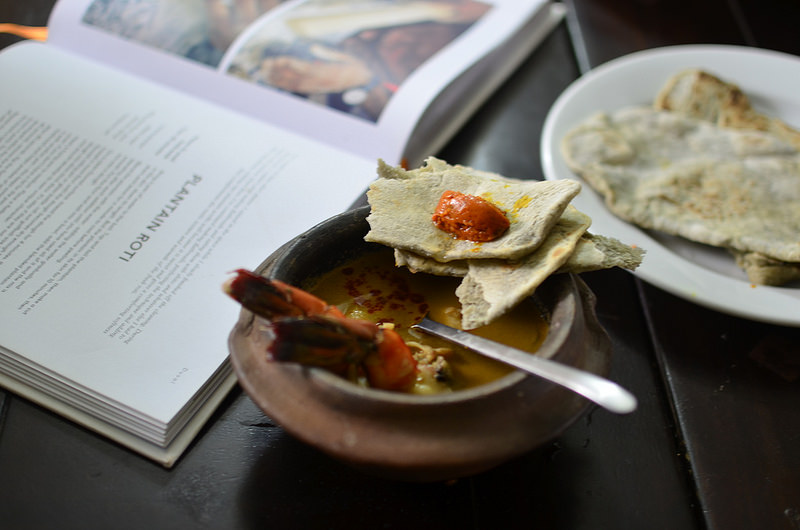


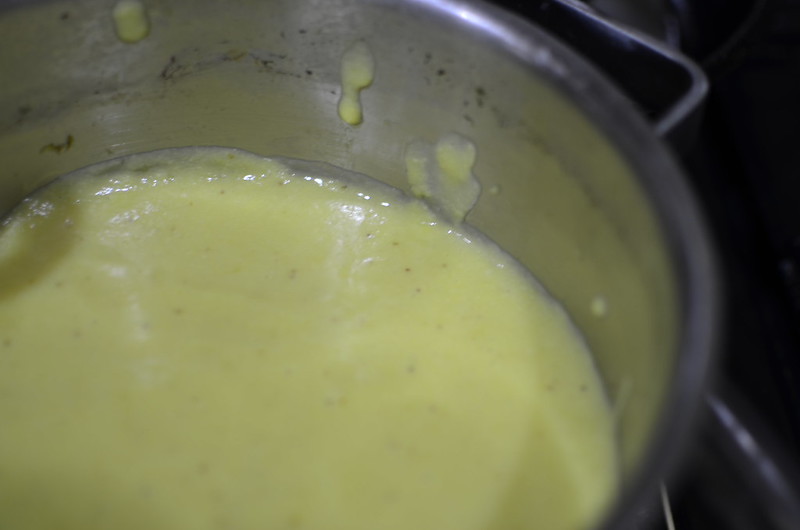

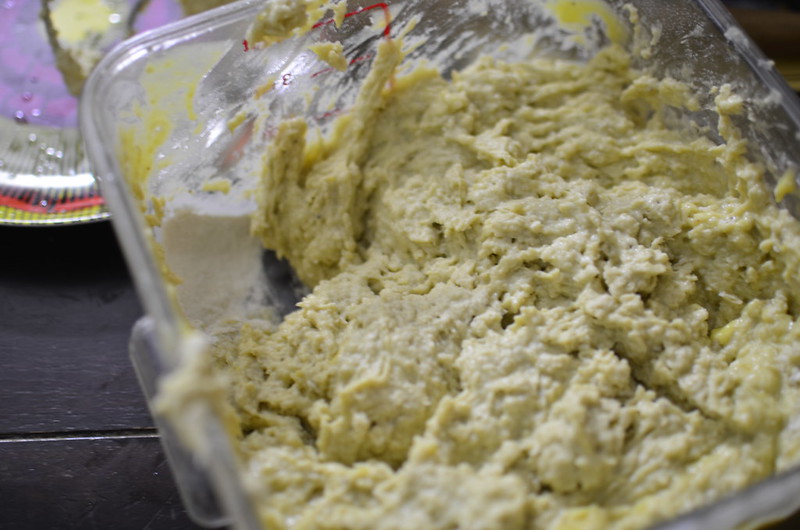
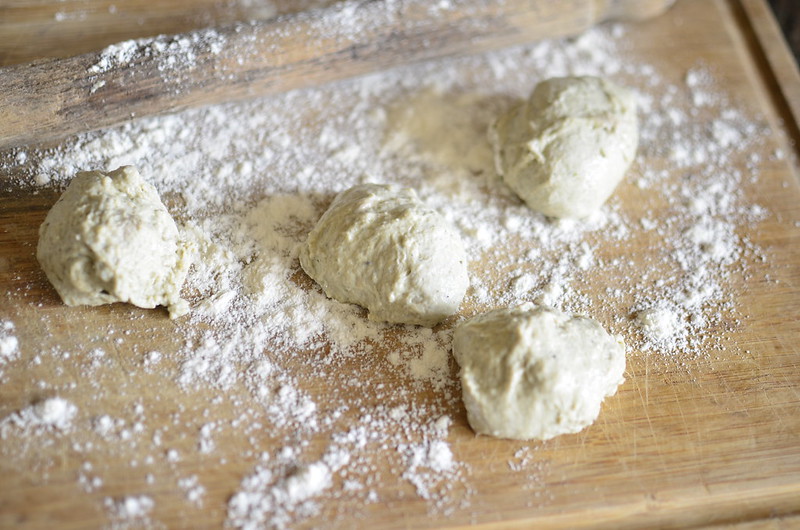

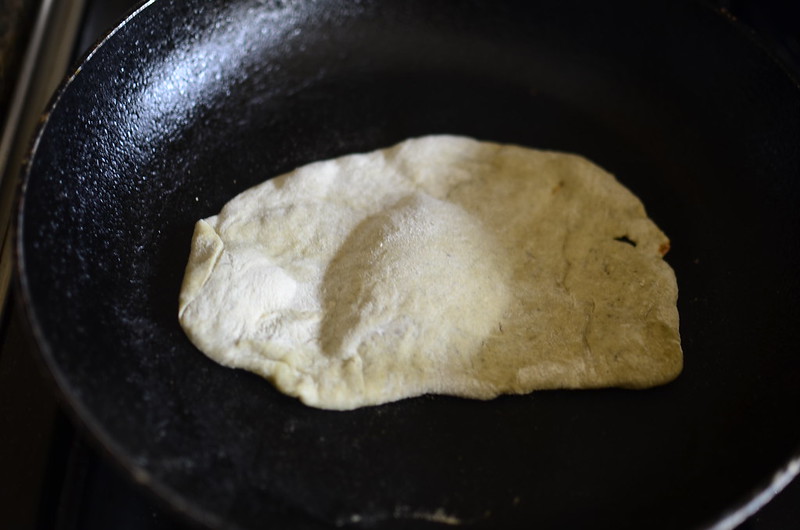
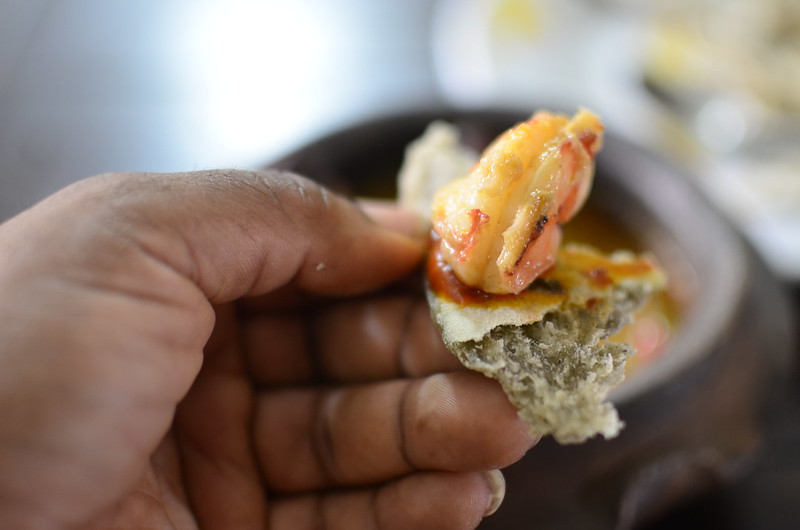

Leave a Reply